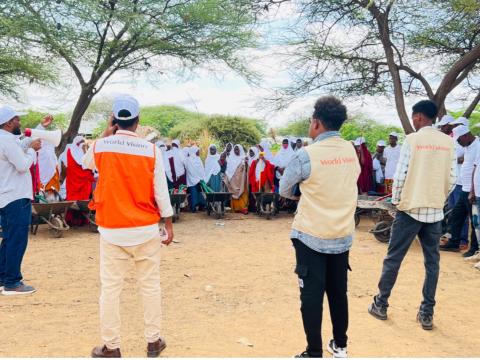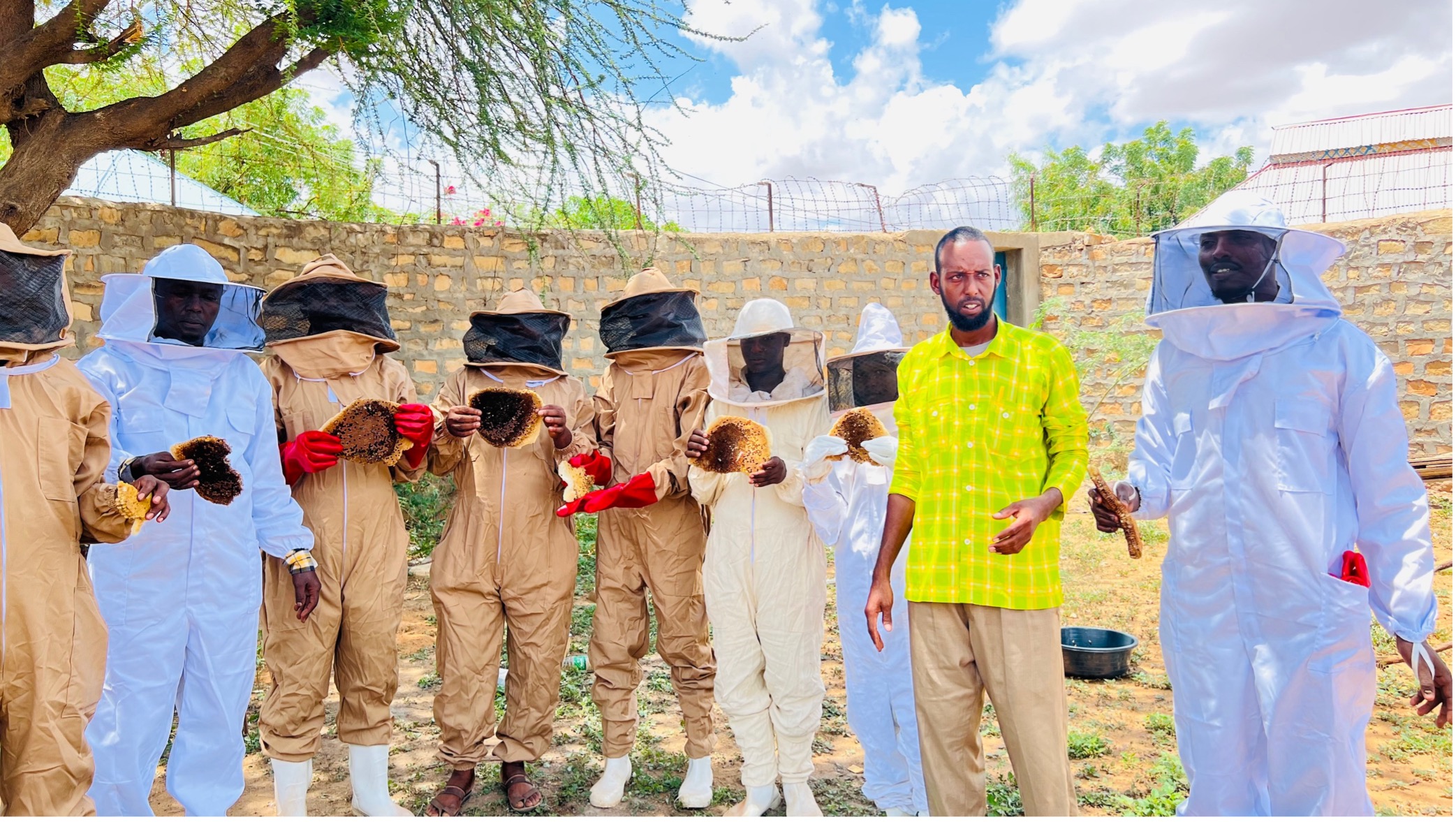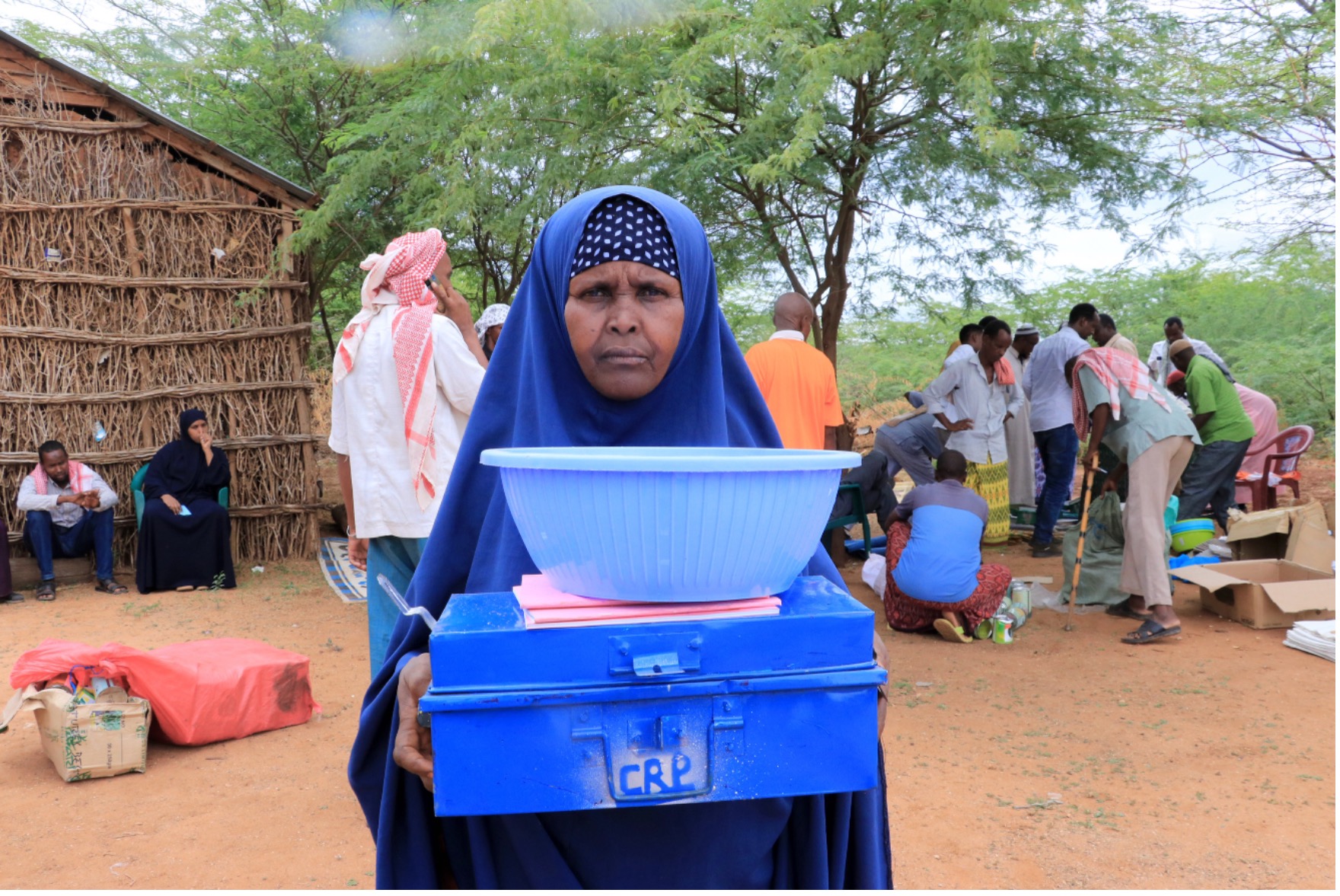Hope After the Deluge: How Luuq is Rebuilding After Somalia’s 2023 Worst Flooding in a Century

Luuq District in Somalia’s Gedo region is a riverine community bordered by the mighty Jubba River. For years, the river has been both a lifeline and a looming threat. In 2023, that threat became a devastating reality.
During the Deyr rainy season (October to December), Somalia experienced what the United Nations has called a “once-in-a-century” flood. Torrential rains battered the region, triggering widespread flooding that affected more than 1.2 million people, displaced over 330,000, and claimed dozens of livesmincluding children. Roads and bridges were destroyed, shallow wells contaminated, and entire communities cut off.
The UN estimated the floods obliterated over 1.5 million hectares of farmland across Somalia.
In Luuq, one of the hardest-hit districts, the river Jubba burst its banks, submerging farmland, destroying crops, and inundating homes. More than 107,000 people were affected in Gedo, with 86,700 displaced across 136 sites. At least 2,400 people were trapped by rising waters and required urgent evacuation, supported by World Vision and partners.
“The water came into places we had never seen flood before,” said Said Salah, a farmer in Bulomusley village. “It swept away homes, vegetation, and farmlands. It was devastating.”
Living Through Crisis
Nearly two years on, the impact of the 2023 floods still lingers. In Luuq’s largest displacement site, Jazira, over 900 households continue to seek shelter, many displaced multiple times by both climate shocks and conflict.
Even after the floodwaters receded, recovery proved painfully slow. With fuel drums costing up to US$200, many farmers couldn’t afford to restart irrigation systems, risking entire planting seasons. World Vision stepped in with emergency fuel support, helping communities resume irrigation and protect their crops.
Looking Ahead with Hope
Through the Nexus Accelerator Fund (NAF), privately funded by World Vision Support Offices, the project is helping farmers not just to recover, but to adapt and thrive. Farmers are receiving drought-tolerant seeds, land preparation support, and practical training in climate-smart agricultural practices tailored to shifting weather patterns. In total, 200 farmers across five villages have been equipped with a variety of seeds, that is onion, watermelon, coriander, tomato, sweet pepper, spinach, and okra, empowering them to strengthen food security in their communities.
In a region where both floods and droughts are increasing in frequency and severity, this intervention couldn’t be more timely.
Abdi Dirie, a Community Animal Health Worker (CAHW), described the compounding crises: “It’s one disaster after another, drought, then floods, and amidst all that, ongoing clan conflict. We just never seem to get a break.”
Abdi highlights the toll these challenges take on livestock, citing common diseases that continue to threaten the backbone of pastoral livelihoods.
Through the NAF project, CAHWs like Abdi have been trained in livestock care and disease management. The community is now connected to veterinary pharmacies and equipped with essential kits that expand access to animal health services, helping protect livelihoods and boost productivity.
“In times like these, treatment and vaccination are vital. We’re grateful to World Vision for providing us with this kind of support that suppor the health and wellbeing of our livestock,” Abdi quipped.
“The training has been so useful. Before this, many of us didn’t have access to this kind of knowledge,” Abdi said. 15 CAHWs have gained from training and received animal kits for treatment and care.
Despite the adversity, there’s a renewed sense of optimism.
“Instead of going to the market, we’ll be harvesting tomatoes, peppers, and watermelons from our own farms,” said Abdinasir, a farmer from Taleh Village.
Beyond agriculture, NAF is also investing in the future of young people in Luuq, offering vocational training and job-ready programmes.

Through Village Savings and Loan Associations (VSLAs), community members are gaining financial skills and starting small businesses. So far, 125 groups across five villages have been trained and equipped with starter kits that include savings boxes, passbooks, calculators, record books, stamp and ink pads, mats, and bowls for social charity contributions.
“This is my first time joining a VSLA group. I hope to benefit and bring positive impact to others,” said Gini, a participant of the project. “We’re a collaborative community.”

The impact of the VSLA goes beyond saving money. They empower individuals- especially women- to invest in small businesses, manage their finances wisely, support their families, and uplift their communities. For many, joining a VSLA marks the first step toward financial independence, sound decision-making, and lasting economic stability.
The Nexus Approach, A Model That Listens
At the heart of the NAF intervention is the Community Adaptation Action Plan (CAAP), a planning tool that gathers input directly from community members.
“This project is different,” said Halima Hussein, also a participant of the project. “We got to speak up about our needs and help shape the support we received.”
As Somalia now braces for yet another climate shock, an anticipated La Niña-induced drought expected to push 4.4 million people into Crisis (IPC 3) or Emergency (IPC 4) levels of food insecurity, integrated, community-driven responses like this are more critical than ever.
Article By Hodan Isse, Communications Officer– Nexus Accelerator Fund, World Vision Somalia, with contributions and editorial support from Lucy Murunga, Senior Communications Manager.